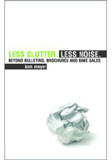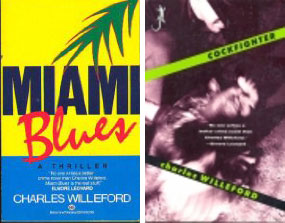
When we went on vacation in mid-September, I took some books of redeeming spiritual and intellectual value…but didn’t read any of them. Instead, I stuck to the escapist track, devouring five thriller novels during our 12-day vacation. All were winners.
Fresh Disasters. This is the first Stuart Woods book I’ve read, which is pretty amazing, considering how many books he’s written in genres I like. He has a series about a private investigator named Stone Barrington. Fresh Disasters is part of that series. I enjoyed the character, and enjoyed the plot–not hugely, but enough to want to read more. I found several more Stone Barrington novels at a used bookstore. They’re now sitting on my shelf. I’ll get to them eventually.
Rough Justice. I’ve read a number of Jack Higgins books over the years, but not in quite a while. It’s about time I got back to him, because he never disappoints. His books have some continuing characters, such as Sean Dillon, who figures in this book. In this book, Higgins creates a new fellow, Harry Moore, who joins this cast of tough-guy British spooks. This was a very good book.
The Killing Floor. This is the first of Lee Child’s novels about Jack Reacher. I’d previously read books 2-5 in the series, but not the first one. Of the books I’ve read, The Killing Floor and Echo Burning are my favorites. This one had a great plot, and plenty of action.
L.A. Outlaws. T. Jefferson Parker is a superb writer. I’ve read only a couple of his books, but they’re always good. And LA Outlaws was outstanding. The central character is a sympathetic woman bank robber, a really unique literary creation. Her parts are written in first person, everything else in third person. I loved this book.
Black Widow. I’d not read a book by Randy Wayne White. He’s a heckuva writer. Black Widow was based on a Caribbean Island. The protagonist, Doc Ford, is a former CIA agent of some kind (the book never really explains much of his background). A collection of very interesting characters populate these pages. White has written another Doc Ford book. I’ll probably need to track it down one of these days.




 “The Things They Carried,” by Tim O’Brien, is considered among the best–if not the best–work of fiction to come out of the Vietnam War. After reading it, I must concur. It is some kind of masterpiece. It’s been two weeks since I finished the book, and I still think about it.
“The Things They Carried,” by Tim O’Brien, is considered among the best–if not the best–work of fiction to come out of the Vietnam War. After reading it, I must concur. It is some kind of masterpiece. It’s been two weeks since I finished the book, and I still think about it.
 I just finished, back-to-back, two Inspector Wexford mysteries by Ruth Rendell, both in my beloved Black Lizard imprint. I had previously read two Rendell books, but none in the Wexford series. These are: “No More Dying Then” and “Some Lie and Some Die.”
I just finished, back-to-back, two Inspector Wexford mysteries by Ruth Rendell, both in my beloved Black Lizard imprint. I had previously read two Rendell books, but none in the Wexford series. These are: “No More Dying Then” and “Some Lie and Some Die.”
 Stephen Coonts made his splash in 1986 as one of the early techno-thriller writers with “Flight of the Intruder.” Tom Clancy, of course, arguably launched, or at least perfected, the genre with “The Hunt for Red October” and then the 1986 “Red Storm Rising.” Dale Brown’s “Flight of the Old Dog” (1987) was excellent. Other writers emerged, and the techno-thriller took off.
Stephen Coonts made his splash in 1986 as one of the early techno-thriller writers with “Flight of the Intruder.” Tom Clancy, of course, arguably launched, or at least perfected, the genre with “The Hunt for Red October” and then the 1986 “Red Storm Rising.” Dale Brown’s “Flight of the Old Dog” (1987) was excellent. Other writers emerged, and the techno-thriller took off.









